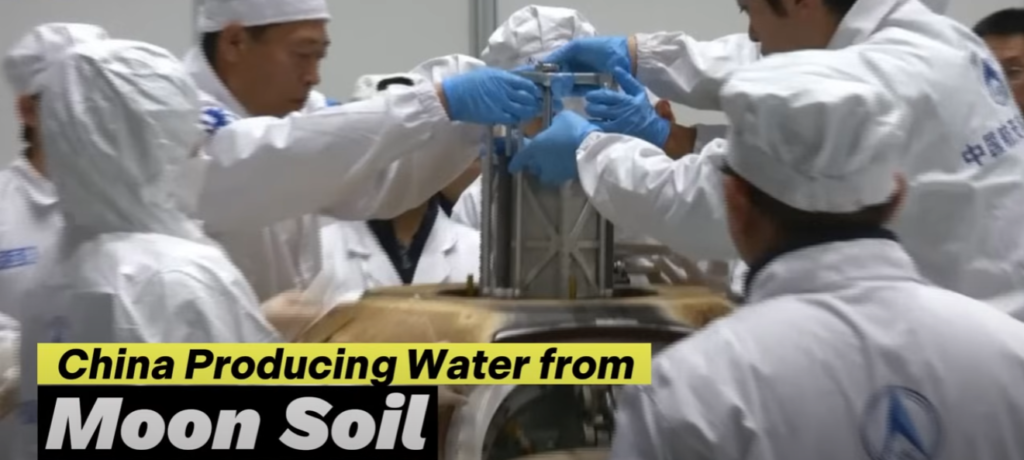
Chinese scientists have developed a method to extract water from lunar soil, a significant advancement for sustaining human presence on the Moon. During the Chang’e-5 mission in 2020, lunar samples were collected and analyzed. Researchers discovered that minerals in the lunar soil, particularly ilmenite (FeTiO₃), contain hydrogen implanted by solar wind over billions of years. By heating these minerals above 1,200 K (927°C) using concave mirrors, the hydrogen reacts with iron oxides, producing water vapor. This process yields approximately 51 to 76 kilograms of water from every ton of lunar soil, equating to about a hundred 500ml bottles, or enough to sustain 50 people for a day.

This breakthrough addresses a critical challenge for establishing lunar research stations and potential human habitats. Water is essential not only for drinking but also for producing hydrogen rocket fuel, supporting further space exploration. China’s long-term plans include building a basic lunar station by 2035 and a lunar-orbiting station by 2045, with the International Lunar Research Station being a collaborative initiative with Russia.

Chinese scientists have developed a new technique to produce significant amounts of water from lunar soil brought back by the Chang’e-5 mission. By heating the soil—rich in hydrogen-containing minerals—to high temperatures, they can generate water vapor. This breakthrough could support future Moon bases, as one ton of soil may yield 51–76 kg of water, enough for 50 people per day. China aims to build a lunar station by 2035, amid growing competition with the U.S. in lunar exploration.